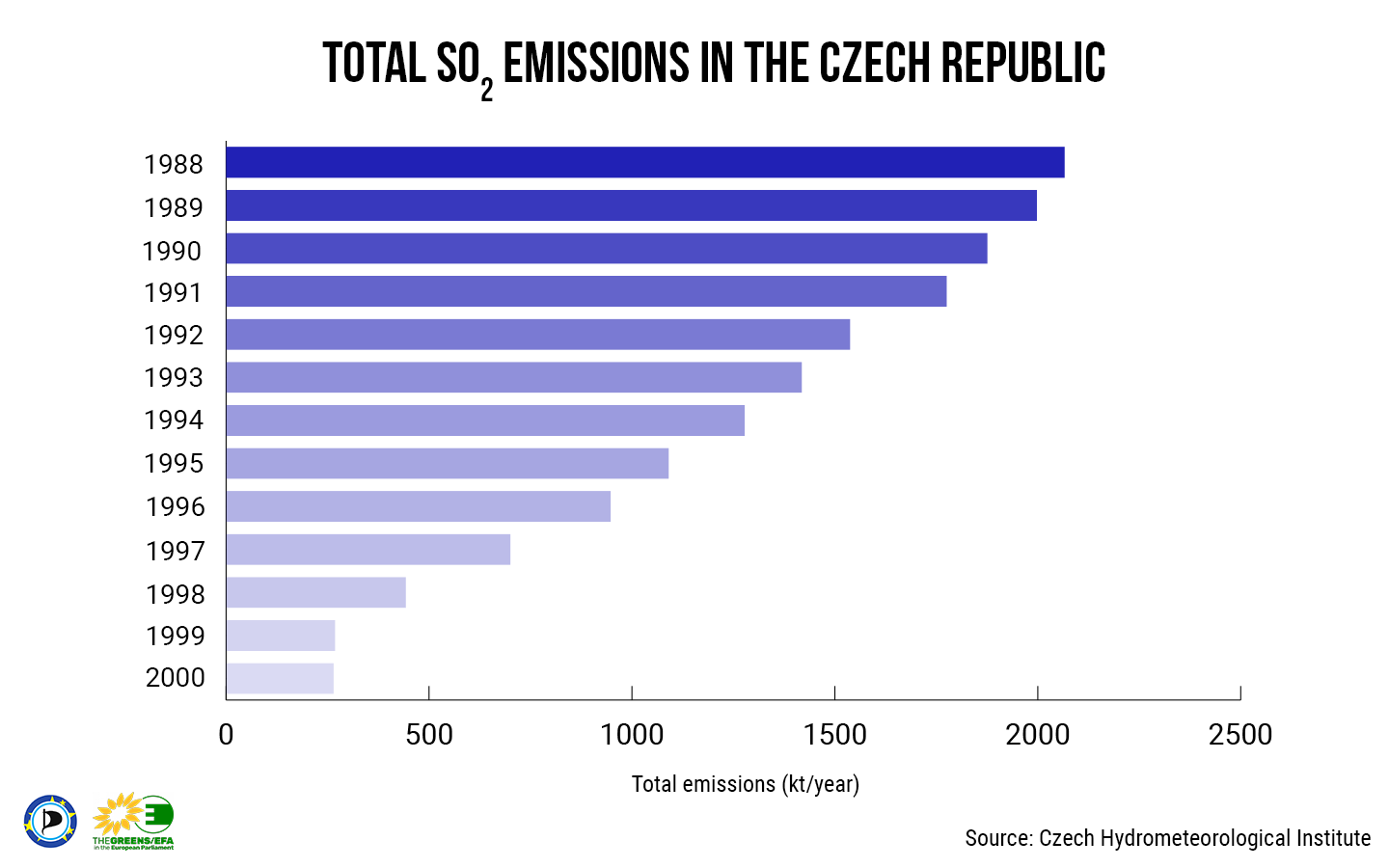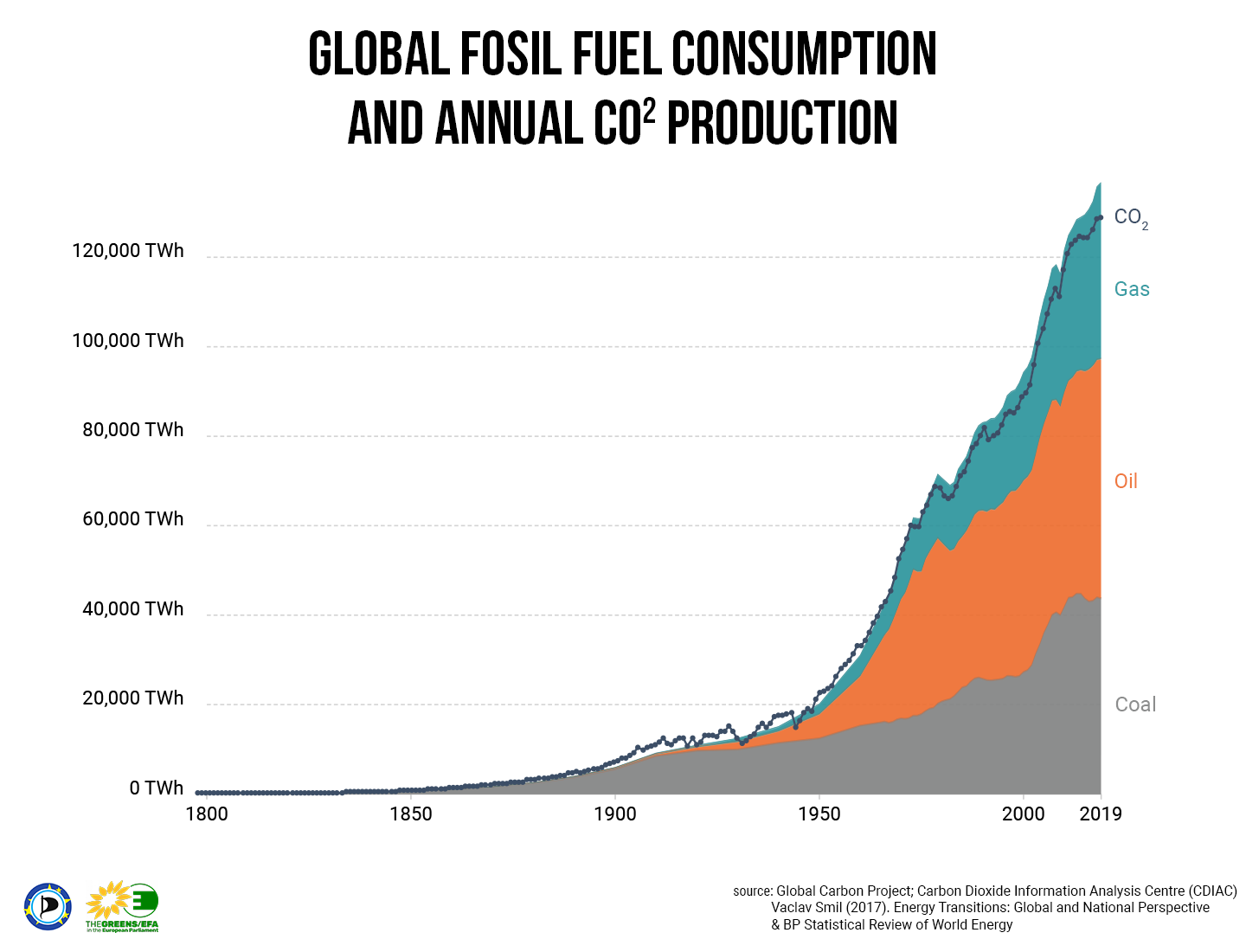MIKULÁŠ PEKSA:
You may have noticed in the media that Europe, the US, China and other world powers have pledged to reduce their greenhouse gas emissions.
Various figures can be heard from all corners of the world – to halve emissions, to achieve carbon neutrality… Ambitious plans to cut emissions have some people worried. Does this mean that industry will close, energy and all goods will become more expensive? Let’s take a factual look at what emissions actually are, how they can be reduced and what this will lead to.
In today’s article, we look at why emissions are being addressed and where we stand with their levels.
1) What are emissions
You may remember this term from the 1990s, when air pollution was a big issue in our country. Especially in the Moravian-Silesian and Ústí nad Labem Region, there were so many pollutants in the air (sulphur dioxide, benzopyrene and particulates such as dust and ash) that as well as increasing the incidence of asthma and cancer, it led to children being born sick. The Teplice programme showed that many more babies with low birth weight and respiratory diseases were born in places with high concentrations of pollutants in the air than in regions with healthier air. Because of bad air, polluted by aggressive industrial production, hundreds of thousands of people have never known what it is like to live a healthy life without problems – let alone their families and loved ones.
We eliminated these emissions quite quickly in the 1990s. During the first few years (1990 to 1998), the production of some pollutants fell by tens of percent per year. The air in both the Moravian-Silesian and Ústí nad Labem regions is objectively better today than it was 30 years ago.

2) What are CO2 emissions?
What we have a problem with today, and not only in the Czech Republic, is the emission of so-called greenhouse gases, mainly carbon dioxide (CO2). This is a gas that is produced by combustion. That means in all petrol and diesel engines, in boiler plants, in heating plants, during the production of cement, iron and steel, but also in breweries, refineries or chemical plants. Here you can have a look at where and how much of it we produce in our country. Carbon dioxide is not used by our lungs to breathe, but otherwise it does not harm them in any significant way. Its dangers lie elsewhere. Together with water vapour, methane, ozone and other similar gases, it creates the greenhouse effect. This is a phenomenon in which the planet’s temperature rises. This is because greenhouse gases have special physical properties that enable them to trap infrared radiation from the Earth, allowing it to be converted into heat, which then heats the atmosphere. So, if you associated the word ’emissions’ with ruined lungs, cancer and respiratory disease in the 1990s, it’s good to remember that the consequences of ‘today’s’ emissions are just as dire, but they come from elsewhere.
If the planet’s temperature continues to rise, it will lead to drying out of the soil and a general shortage of water, which we will all be fighting over. Trees in forests will not get enough natural nutrients from sap and will be easily destroyed by bark beetles or other pests. Because of the higher temperature, whatever grows and lives will not be able to live and grow in its present location. Because there will be no food to eat, no water to drink, no way to survive. Some living creatures, including humans, will solve this by migrating to wherever better conditions are. Some species will not be able to adapt fast enough and we will lose them irreversibly. The more heat greenhouse gases release into the atmosphere, the more likelihood of extreme weather events. The thing is that these are not being brought down on us by a higher power, they are directly proportional to the amount of free energy in the atmosphere. In plain English, ‘today’s‘ emissions can cause destroyed forests instead of ruined lungs, extinction of species instead of cancer, severe weather with large fluctuations, loss of habitable land, and drought.
The problem with carbon dioxide is that it is produced in large quantities and is very slowly removed from the atmosphere, unlike water vapour for instance. Normally, greenhouse gases in the atmosphere help maintain the temperature we are used to. Without greenhouse gases, the earth would be about -18 degrees Celsius. But when there’s too much carbon dioxide, it causes the planet’s temperature to keep rising. Well, you say, when it gets really hot here, we’ll temporarily reduce emissions and the temperature will level off again. No, it doesn’t work that way. There is a limit to how much CO2 can be in the atmosphere for the gas to work properly and ‘warm’ our planet consistently to a comfortable 14 degrees or so. When it gets above that limit, it starts to heat it up uncontrollably. More and more (watch this video, for example, or, if you prefer to read, check out the Academy of Sciences brochure). And there’s nothing we as a civilization will be able to do about it. If this prediction were to come true, we would only become helpless witnesses to an economic, environmental and civilization collapse with immense costs. Ninety-four-year-old British naturalist David Attenborough has made a feature film on this scenario, check out the trailer at least. Or take a look at the images from Google maps to see how the changes are already showing up in the disappearance of forests. This is simply huge. This uncontrollable ‘warming machine‘ would do even more damage than the coronavirus pandemic, and there would be no vaccine solution on the horizon.
3) Where did all these CO2 emissions come from?
So, we are not concerned about CO2 emissions because of bad air. We are concerned about them because of the soil, the water and the overall conditions for life on this planet. The fact that too much carbon dioxide can cause a ‘self-heating‘ effect has long been known. The idea first emerged more than 100 years ago. But back then, it was a theory. The industry was in its infancy and nobody expected that the numbers of engines, boiler rooms, plants that burn something and produce this gas would increase so dramatically. But that is exactly what happened.

Source: Global Carbon Dioxide Information Analysis Centre (CDIAC)
Vaclav Smil (2017). Energy transitions: Global and National Perspective & BP Statistical Review of World Energy
Does this remind you of the pandemic curve? Yes, fossil fuel-based production has also spread organically across the planet in the last century. For a long time, there was no other way to increase production and improve people’s living standards. In a way, the fossil fuel industry had monopoly on wealth. Technologies for production, transport or energy with minimal CO2 emissions only started to develop from the 1960s onwards. It is only since the 1980s that the UN has been concerned with emissions. And in the meantime, the temperature has been rising (it is no coincidence that this graph has the same evolutionary dynamics as the evolution of emissions).
As the planet’s temperature rises, there is a growing concern and willingness among scientists, politicians, business people and ordinary people around the world to finally start addressing the problem in earnest. 100 years ago, this was an interesting theoretical consideration because the production of emissions was orders of magnitude smaller (in 1900, mere 1.765% of current emissions were produced worldwide). But today we are at a point where physicists of the time dared to go only in the boldest models on paper. Moreover, today’s level of technology already makes it possible to make the change on a large scale. You will not find a single area of industry, logistics or the power engineering where fossil fuels are not being competed with by another technology. It’s just a matter of having the right solution and being willing to invest in it in time. That is why this year representatives from Europe, China, Brazil, the US and other world powers have come to the table and agreed on concrete targets for reducing emissions. That is why the Paris Agreement, was concluded a few years ago, signed by 155 countries that together account for 90% of today’s emissions. We are getting it under control. Because it is becoming clear to everyone how much of a mess it would be if we failed.
4) How can CO2 emissions be reduced?
Well, I’ll tell you how it can’t be done. You can’t shut everything down immediately and without any replacement. Our entire current economy grew on industry, and it still plays a huge role in how many people have jobs in what areas, and how wealthy each country is. Shutting down all fossil fuel industries overnight and replacing them with nothing would only bring confusion and decline. It must not be done in the same way that the government in the Czech Republic is closing shops and declaring a state of emergency. It takes a combination of well thought out and strong quality laws, their enforcement and positive financial incentives so that everyone on the market can see that reducing emissions is economically worthwhile. And that is what the EU is working towards, both in terms of measures and in terms of investment policy.
The transition to a sustainable economy does not have to mean cuts and restrictions, but can bring innovation, new jobs and better living standards. Take a look back to just before the pandemic crisis. The economy was growing, emissions were falling. Yes, in Europe, we have managed to reduce the amount of CO2 produced over the past 15 years, thanks, among other things, to so-called emission allowances. The EU introduced them in 2005 and they have saved around 1 billion tonnes of emissions between 2008 and 2016. Since the introduction of emission allowances, the amount of CO2 generated in European countries has fallen by more than 25 %. You may not think that figure is large, but the fact is that we have put in place the first ever market-based system for reducing emissions worldwide. It has inspired the creation of similar instruments elsewhere and is still the largest one today. And that is why we’ll take a look at how it works in more detail in the next part.


0 comments on “Climate Special: Is Europe just digging a hole for itself?”